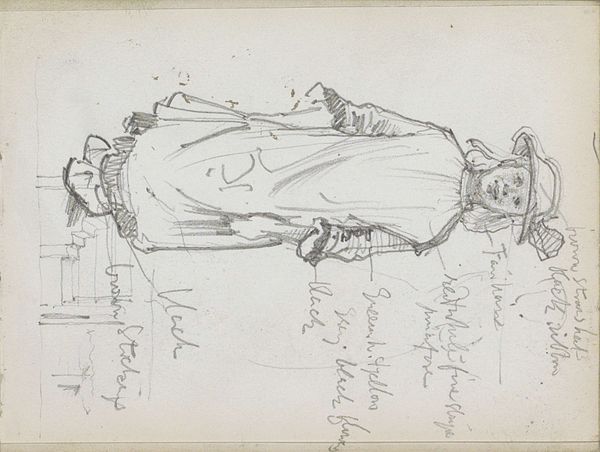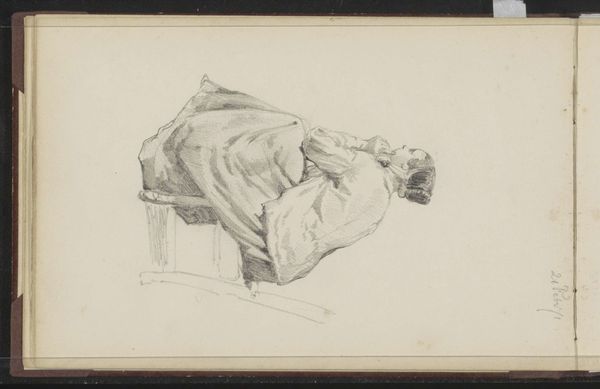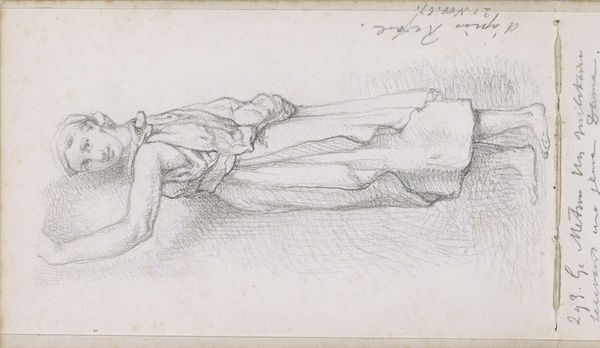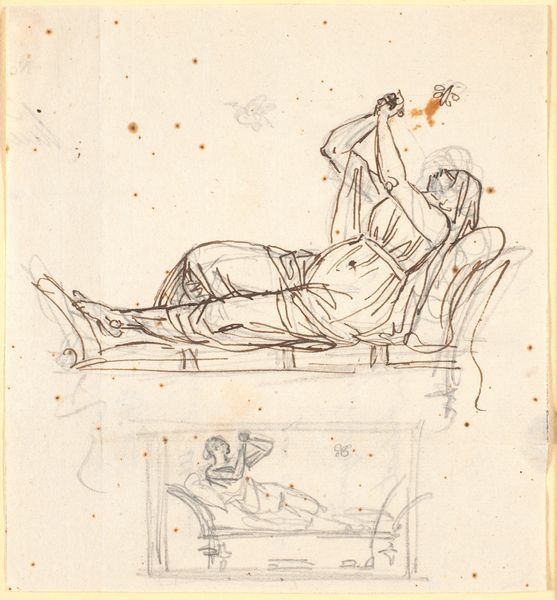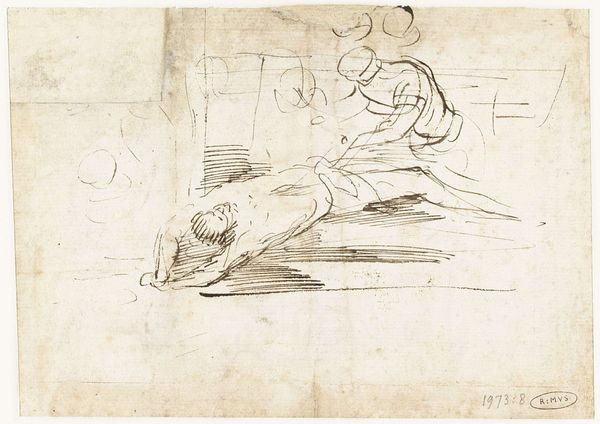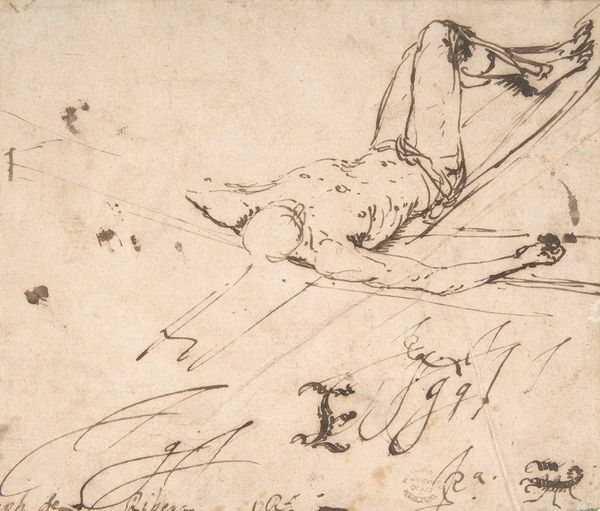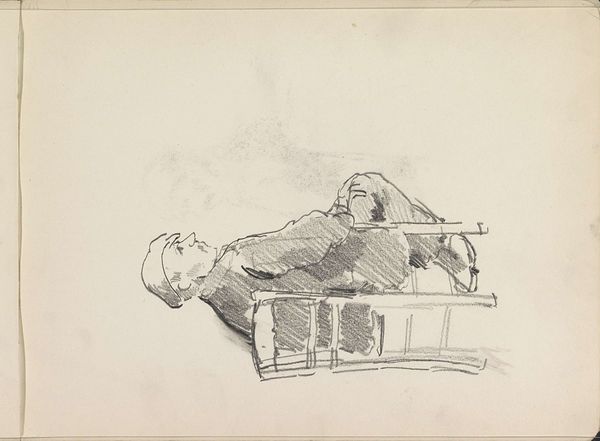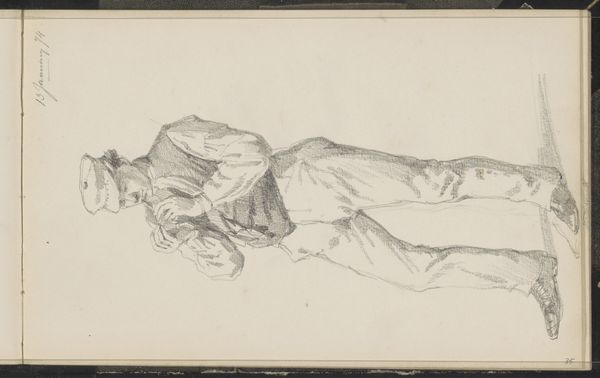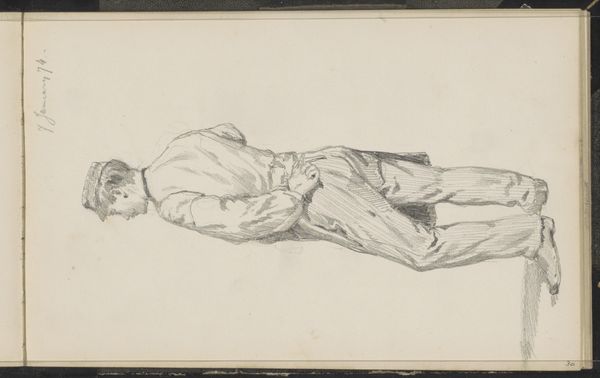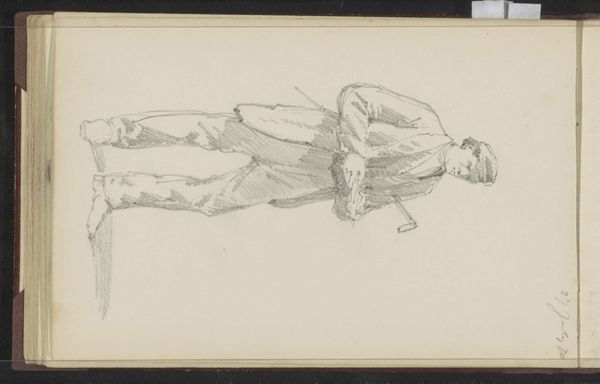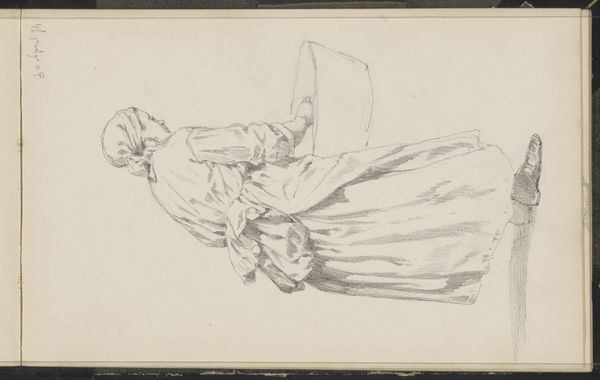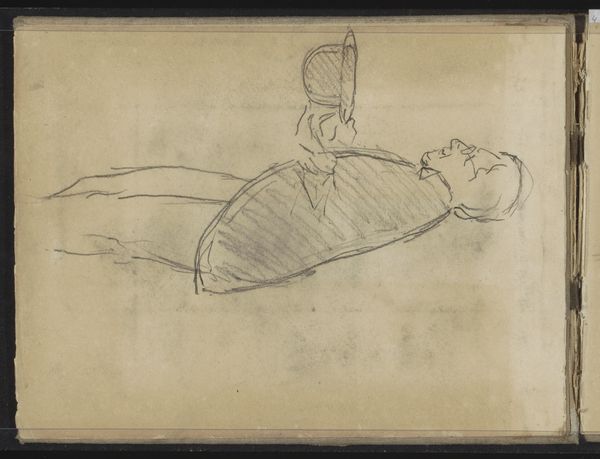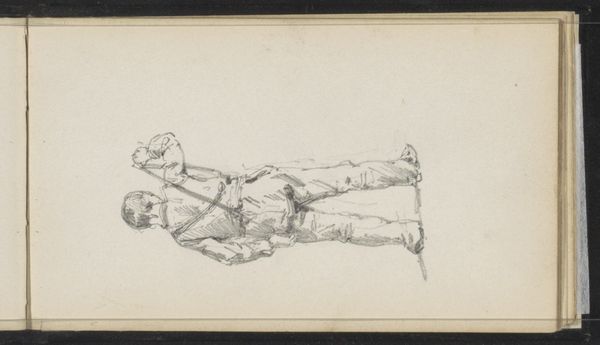
Marcia som begræder sin fader Cremetius' død 1743 - 1809
0:00
0:00
drawing, ink, pen
#
drawing
#
neoclacissism
#
ink drawing
#
narrative-art
#
figuration
#
ink
#
pen
#
history-painting
Dimensions: 100 mm (height) x 153 mm (width) (bladmaal)
Editor: This drawing, "Marcia som begræder sin fader Cremetius' død," created between 1743 and 1809 by Nicolai Abildgaard, is an ink and pen drawing depicting a figure grieving over a body. There's such raw emotion captured in these simple lines. What story do you think it's trying to tell? Curator: It’s interesting to see Abildgaard engaging with historical and philosophical themes here. The title tells us it depicts Marcia mourning the death of her father, Cremutius Cordus, who was a Roman historian that was forced to commit suicide because he criticized emperor Sejanus in his writing. You see echoes of that act of defiance in neoclassical art of this period and slightly later--such depictions served as a critique against tyrannical regimes. Editor: So the image is not only of personal loss, but also hints at larger political themes? Was that common at the time? Curator: Absolutely. Neoclassicism often borrowed from classical history and mythology, using those narratives as allegories for contemporary political situations. Artists were subtly - or sometimes not so subtly - commenting on power structures and social justice, using the past as a mirror to the present. Who had access to these pieces, and therefore who would get the message? Editor: So a work like this would likely be displayed in wealthy and influential places? Curator: Precisely, shaping the political consciousness of the elite. Even a sketch like this served as an important cultural touchstone and Abildgaard used it to make very potent, very clear statements on Roman social life and politics. Editor: I didn’t realize how much political weight a seemingly simple drawing could carry. It gives the image a whole new dimension. Curator: And that is how we understand art as part of a conversation, a tool, in shaping cultural values. Understanding these connections provides context to interpret it more broadly and personally.
Comments
No comments
Be the first to comment and join the conversation on the ultimate creative platform.
